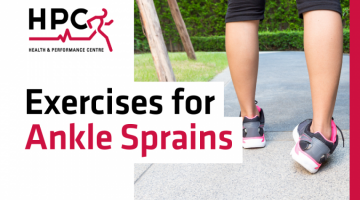All About Dry Needling for Physiotherapy & Chiropractic
What is Dry Needling?
If you have ever heard of a treatment called dry needling and wondered what it is or if it may be an option for you, then you are not alone. Although the procedure may appear intimidating, dry needling is a safe and minimally invasive treatment performed by certified healthcare practitioners, including trained Guelph Physiotherapists at the University of Guelph’s Health and Performance Centre.
Dry needling is used to treat musculoskeletal trigger points, which are irritable and tight areas within a muscle or connective tissue that can result in pain over large areas of the body. Active trigger points can result in local or referred (in a different area of your body) symptoms, including pain that limits daily activities and movement.
How Does Dry Needling work?
Dry needling involves inserting a very thin, acupuncture-like needle through the skin and muscle to stimulate a trigger point. Inserting the needle elicits a localized twitch response or contraction in the muscle that relaxes the tight muscle bands associated with the trigger point and causes a pain relief response.
Dry needling also enhances blood flow to the stimulated region which may promote healing and improve function. The needle is removed once the trigger point is inactivated. The goal of dry needling is to reduce pain and improve movement by inactivating trigger points.
Dry needling is rarely a standalone procedure and is often part of a broader treatment approach that includes exercises and stretches to further decrease the pain and improve motion.
What are the Benefits and Risks of Dry Needling?
Guelph Physiotherapists at HPC will use dry needling as a precise treatment for muscle soreness as well as a variety of other conditions. Due to the incredibly small size of the needles, dry needling can precisely target muscle trigger points responsible for pain. Slight pain or muscle twitching may occur during a dry needling session, and relief may be immediate or prolonged depending on the treatment plan, location, and type of injury.
It is important to note that the benefits of dry needling greatly outweigh the risks. There are risks associated with all forms of invasive treatment, but despite this, medical professionals are ready and able to act if such an event takes place.
The risks associated with dry needling include injury to blood vessels that may cause bleeding, injury to nerves, injury to organs, and injury to the spinal cord. Devices within the body may also incur damage. Infection is also possible.
A study to determine the likelihood of adverse injury as resulting from dry needling found that out of 7,629 treatments performed, there were zero reported instances of severe injury, while only 20% of patients experienced mild injury such as bleeding, bruising, and pain upon needle insertion.
What is Dry Needling Used to Treat?
Dry needling can be used to treat a variety of conditions. The following conditions are commonly treated using dry needling:
- Myofascial pain (pain of the connective tissue surrounding muscles)
- Migraines and tension headaches
- Temporomandibular joint pain (TMD)
- Joint injuries
- Carpal tunnel syndrome
- Spinal Injuries
For more information on Guelph physiotherapy and dry needling and to determine if you are a good candidate for this treatment, contact your Guelph physiotherapist at HPC today.
*About the HPC Student Volunteer Program*
Each year, approximately 30 University of Guelph students are selected following a competitive application process to take part in the “HPC Volunteer Program.” This program allows U of G student volunteers to translate their academic knowledge into practice while gaining first-hand experience and mentorship from the team of certified physiotherapists and chiropractors at the University of Guelph’s Health and Performance Centre. As a result of this exceptional partnership between the University of Guelph and the HPC practitioners, students can gain valuable insight on evidence-based practice prior to graduating from their respective programs. Click here for more information on co-curricular experiential learning opportunities at the University of Guelph. This article was written by members of the 2021-22 HPC Student Volunteer Program.
References
Boyce, D., Wempe, H., Campbell, C., Fuehne, S., Zylstra, E., Smith, G., Wingard, C. & Jones R. (2020). Adverse events associated with therapeutic dry needling. Int J Sports Phys Ther, 15(1), 103-113. https://www.ncbi.nlm.nih.gov/pmc/articles/PMC7015026/#:~:text=Since%20dry %20needling%20involves%20a,are%20possible%20hazards%20for%20patients
Brady, S., McEvoy, J., Dommerholt, J. & Doody, C. (2014). Adverse events following trigger point dry needling: a prospective survey of chartered physiotherapists. J Man
Manip Ther, 22(30), 134-140. DOI: 10.1179/2042618613Y.0000000044
Cagnie B, Barbe T, De Ridder E, Van Oosterwijick J, Cools A, Danneels L. The influence of dry needling of the trapezius muscle on muscle blood flow and oxygenation. J Manipulative Physiol Ther. 2012;35(9):685-691.
Dunning J, Butts R, Mourad F, Young I, Flannagan S, Perreault T. Dry needling: A literature review with implications for clinical practice guidelines. Phys Ther Rev. 2014;19(4):252–265
Gerber, L.H., Sikdar, S., Aredo, J.V., Armstrong, K., Rosenberger, W.F., Shao, H. & Shah, J.P. (2017). Beneficial effects of dry needling for treatment of chronic myofascial pain persist for 6 weeks after treatment completion. PM R, 9(2), 105-112. DOI:
10.1016/j.pmrj.2016.06.006
Kietrys DM, Palombaro KM, Azzaretto E, Hubler R, Schaller B, Schlussel JM, Tucker M. Effectiveness of dry needling for upper-quarter myofascial pain: A systematic review and meta-analysis. J Orthop Sports Phys. 2013;43(9):620-634.
Mejuto-Vázquez MJ, Salom-Moreno J, Ortega-Santiago R, Truyols-Domínguez S, Fernández-de-las-Peñas S. Short-term changes in neck pain, widespread pressure pain sensitivity, and cervical range of motion after the application of trigger point dry needling in patients with acute mechanical neck pain: A randomized clinical trial. J Orthop Sports Phys. 2014;44(4):252-260.



